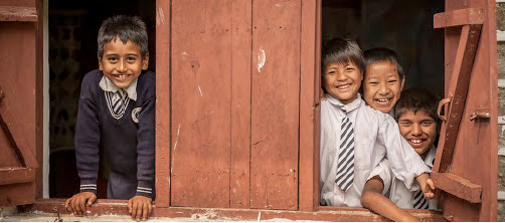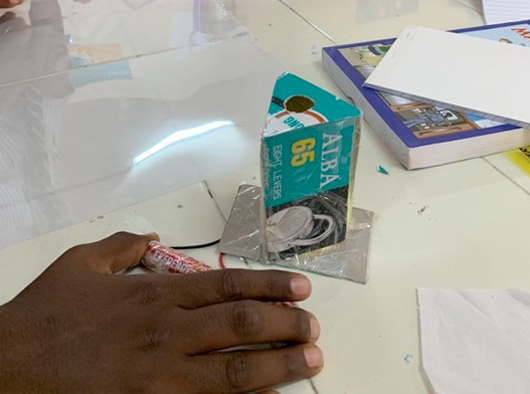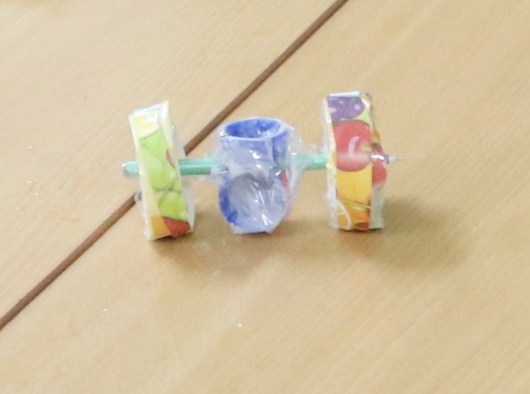
Abstract
Indian school education fails to equip students with critical thinking and problem-solving skills. Lack of such training stymies holistic social, economic, and cultural development. Hence, there is a dire need to develop approaches for critical thinking and problem solving in the current reality of the Indian classroom which includes poverty, poor pre-service and in-service teacher training, vast and burdensome syllabus, inadequate facilities, geographic diversity, and so on. This paper explores possible approaches for addressing this need for low-income children in Grades VI - IX in the context of science learning. It is shown that even within the constraints of the current education system, children with significant conceptual and language gaps are capable of assimilating and applying complex science concepts. By constructively involving teachers in developing and refining these approaches, it will be possible to harness children’s innate ability to imagine, explore and innovate for the benefit of the nation and the world. Keywords: Low-income children, "Slow learner", Science education
1. Introduction

This article summarizes preliminary observations which show that children from low-income backgrounds often labeled as "poor performers" or "slow-learners", when given a structured environment where they are allowed to explore and construct their understanding in a scaffolded manner, are capable of assimilating, creatively applying and communicating science concepts at, or above, grade levels in short periods of time.
1.1. Status of Indian School Education
India has one of the largest school going populations in the world, with approximately 340 million children of school going age ("C-13 single year age returns", 2011). About 70% live in rural areas and a similar number attend Govt. schools. While the school enrollment rate (~97%) is at a record high, the quality of education is abysmal. It is estimated that approximately 27% of children in Grade VIII cannot read Grade II text, and 56% of the children in Grade VIII cannot perform 3-digit-by-1-digit division ("Annual Status of Education Report", 2018). India is also far behind in cultivating critical thinking, problem solving and communication skills in children. For instance, India was second last in a group of 73 countries (Singh, 2019; Chappia, 2012) in the 2009 round of Programme for International Student Assessment. Such continued dismal performance will have negative repercussions on economic, cultural, social, and technological development.
1.2. Challenges Faced by Children and Teachers in the Classroom
It is beyond the scope of this article to discuss the complex web of issues which lead to poor learning in the majority of Indian classrooms. However, there are several common concerns raised by students and teachers across multiple geographic locations .
1.3. Common Issues Raised by Children
1. Lack of voice and activity in the classroom - often articulated by students as teachers "talk too much", or by saying that they do not like the "lecture method" of teaching.
2. Hectic schedule. Packed, rigid "timetables" prevent children from engaging in play, exploring and applying their learning. Children often articulate this issue by saying that they have "hectic" schedules and lack "breaks" between classes.
3. Onerous syllabus and lack of conceptual understanding. Voluminous textbooks and burdensome syllabus do not give students the time and space to understand and apply concepts. These issues coupled with poor reading and numeracy skills lead students to complain that they are not able to "understand questions or answers in their exams."
1.4. Common Issues Raised by Teachers
1. Non-academic workload. Teachers often voice their frustration about being burdened with non-academic duties which take away time from working with students.
2. Socioeconomic stressors. Children in poverty are often subject to abuse, neglect, undernourishment, unstable homes, migration, crime, exploitation, and other challenges which lead to a host of behavioral and cognitive issues in the classroom. Pre-service and in-service training fails to equip teachers with the requisite skills to deal with these extremely challenging issues.
3. Academic Issues. Poorly thought through or executed policies and processes often stymie the work of well-intentioned, hardworking, and creative teachers. Issues raised by teachers under this category include curricular overload and misaligned assessments which test for recall, deputing teachers not trained in subject areas for teaching science, large classroom sizes, a single teacher having to teach multiple grades in multiple subject areas, mandatory professional development which does not align with teacher needs, school management and Govt. education system focusing on "exam performance", and lack of effective support.
_________________________________
Information from informal conversations with ~80 low-income school teachers, and ~250 low-income children in multiple geographic locations. Details withheld to maintain anonymity.
4. "Slow-learners." Teachers often complain of "slow learners" to describe any child who is not able to "pay attention" or "perform" in classroom. The indiscriminate use of this term traditionally used to describe children who have lower than average intelligence quotients (IQ between 70 and 85) but do not have intellectual disability (IQ less than 70) ("Slow learner FAQ", 2020). This misconception stems from a lack of understanding of how children learn, and correspondingly low awareness of the spectrum of learning difficulties and disabilities. Therefore, there is a strong possibility, as discussed below, that many children labeled as "slow" or "poor performers" may in fact be highly intelligent, but are not inclined to learn by the "paper and pencil" approach.
In summary, there are host of issues which even well-meaning teachers face in helping children learn. Therefore, there is a dire need to devise approaches which will help teachers support students' learning within the constraints of the current education system in India. The rest of this article provides an outline of the principles and their application which will help children develop critical thinking and problem solving skills in Indian classrooms.
2. Meaningful Science Learning in the Context of the Indian Classroom
2.1. Core Principles
The following core principles underlie the preliminary work with children and teachers discussed in the following pages.
-
Scientific "method" and "real-life" connect. Through discussion and practice, help children understand that science is a process through which they can iteratively construct and apply sophisticated conceptual understanding using simple day-to-day life experiences and materials.
-
Children discover and construct concepts. With textbook as the basis, provide opportunities for children to construct, test, and evolve their conceptual understanding in the classroom through structured, scaffolded questions and child-driven demonstrations. The instructor's role is mainly focused on guiding the thought processes of the students.
-
Peer-learning. Tap into peer-learning mechanisms and provide diverse opportunities for children to communicate their understanding.
2.2. Rationale
Connecting everyday phenomena to textbook conceptual content enables children to organically see connections between seemingly "difficult" and "esoteric" concepts and their daily life. Children also implicitly understand the complex connections between different concepts and learn to apply them using simple everyday materials thereby increasing self-motivation, confidence, communication skills, and concept retention. Since the concepts are textbook-based and involve peer-learning, it reduces the effective teaching time and burden. Since children pick concepts of their choice, the difficulty level is "pegged" to a level sufficiently interesting and challenging for the children. Also, by giving children a free hand on how they choose to construct their knowledge, children with different modes of learning are effectively able assimilate and apply concepts.
2.3. Student Groups
The "Core Principles" outlined above were used in different contexts with approximately ~250 children, including:
-
Group 1: approx. 30 tribal girls (Grades II - XII).
-
Group 2: approx. 65 orphaned and destitute children (Grade VI).
-
Group 3: 40 low-income rural children from residential schools (Grade IX).
-
Group 4: approx. 120 urban low-income children (Group VI).
The work with the above groups of children was done in different geographical locations between June 2018 - June 2019. Most of the children had significant literacy, numeracy and conceptual knowledge gaps, and Group 3 children (from rural residential schools) were in fact labeled by their teachers as "slow learners" who were "average" or "below average" in classroom "performance." While the instructional approach varied based on context, the core principles and patterns of learning remained same across groups. In the interests of brevity, a brief summary of the work done with Group 3 children is discussed below.
2.4. Application of Core Principles for "Slow Learners"
Group 3, Grade IX children, considered as "slow-learners" were spread across three independent two-day workshops held in different locations in India - Bengaluru, Karnataka (20 students), Lucknow, Uttar Pradesh (12 students), and Dist. Kamrup, Assam (8 students). On Day 1 the children, along with their teachers, discussed their perceptions of science and what they felt they "liked" and "did not like" about learning science and math. Teachers and students were also asked to list "difficult topics" in these subjects (see Table 1) from Grade VIII. On Day 2, students and teachers were split into groups, were assigned one "difficult" topic per group and were given ~2 hours develop their ideas on specific concepts of their choice within the topic. To simulate resource constraints, the groups had to develop and present their ideas with a limited number of low-cost locally available items given to them. Textbooks were available and everyone was free to talk to their peers. Students and teachers were not allowed to talk to each other. The student groups were asked structured, probing questions to help them focus their thought process, and elicit answers from them. In general, no conceptual or design help was provided.
Table 1. List of "difficult " Topics (Grade VIII), by Subject Area, Collated From Students and Teachers
| Physics | Chemistry | Biology | Math |
|---|---|---|---|
| Earthquakes, wind, storm, cyclone, lightning, | Mole, metals and non-metals | Classification | Geometry problems; Mensuration |
| Light, Light as Energy; Why we see only one side of moon? | Chemical Formulae and Equations | Diversity | Comparing quantities; Factorization |
| Sound | Ionic reactions | Nitrogen cycle | Linear and Alg. Equations, Identities; Polynomials |
| Chem. Effects of Electric Current, Flow of charge | Cell structure and function, Tissues, sexual reproduction | Fundamental integer operations; Exponents; Rational & irrational numbers, compound interest |
2.5 Results
Across all three locations students classified as "slow learners" did an outstanding job of creating, demonstrating and presenting "projects" on "difficult" topics with limited materials and only 2 hours of time. Few highlights are given below.
-

Demonstrated "proof" of laws of reflection on plane and curved surfaces by using a protractor, the polished metallic leg of a chair and a laser pointer.
-
Fashioned a kaleidoscope with plastic sheets, waste cardboard, and an LED (Fig. 1).
-
Developed a creative way of showing that force causes an object to move. The students fashioned wheels out of cut paper cups, an axle with post it notes and pasted plastic bottle caps on the axles so that when water falls on one of the caps, it causes the axle and wheels to rotate (Fig. 2).
-

Inferred: (i) that sound is caused by vibrations, (ii) relative speed of sound in different media, (iii) basics of acoustic impedance and dampening.
2.6. Conclusions
understanding in a scaffolded manner, children from low-income backgrounds, and diverse geographic locations often considered as "slow learners" or "poor performers" consistently show outstanding creativity and ability to assimilate and apply science concepts at, or above, grade level. By co-opting motivated teachers in low-income schools, it will be possible to help children learn and apply science concepts in challenging environments
Acknowledgements
The author would like to thank UNESCO MGIEP for supporting part of the work reported in this article.
References
Annual Status of Education Report, Pratham Foundation. (2018). Retrieved from: http://img.asercentre.org/docs/ASER%202018/Release%20Material/aserreport2018.pdf
C-13 single year age returns by residence and sex. (2011).Retrieved from: https://censusindia.gov.in/2011census/C-series/C-13.html
Chhapia, H. (2012, August 3). India backs out of global education test for 15-year-olds. Retrieved from: https://timesofindia.indiatimes.com/city/mumbai/India-backs-out-of-global-education-test-for-15-year-olds/articleshow/15332715.cms?referral=PM
Singh, D. (2019, December 23). How to teach mathematics in schools. Retrieved from https://www.newindianexpress.com/opinions/2019/dec/23/how-to-teach-mathematics-in-schools-2079755.html?utm_source=Dailyhunt
Slow learner FAQ. (2020) Retrieved from: https://schoolpsychologistfiles.com/slowlearnerfaq/
